Avro Arrow airworthy replica nearing completion
It was 60 years ago this month that one of the world’s greatest interceptors took to the skies for the first time.
Built by the A.V Roe Company of Malton, near Toronto Ontario, the Arrow, designated CF-105, was a stunningly sleek and beautiful plane and the world leader in aero-space technology in the late 50’s.
It also was destined to surpass its expectations and break several aviation records.
But the programme was suddenly, and even brutally terminated in 1959.
Now a group of highly-skilled volunteers in Calgary, Alberta is bringing this aviation jewel back to life. They are slowly and carefully nearing completion of a 60 per cent scaled-down high performance replica called Arrow-II
Michael Ward is the treasurer of the A.V Roe (AVRO) Museum at the Springbank Airport near Calgary, Alberta.
ListenThe group are members of the A.V Roe (AVRO) museum, dedicated to keeping alive the memory of this Canadian company with its advanced aerospace technology.
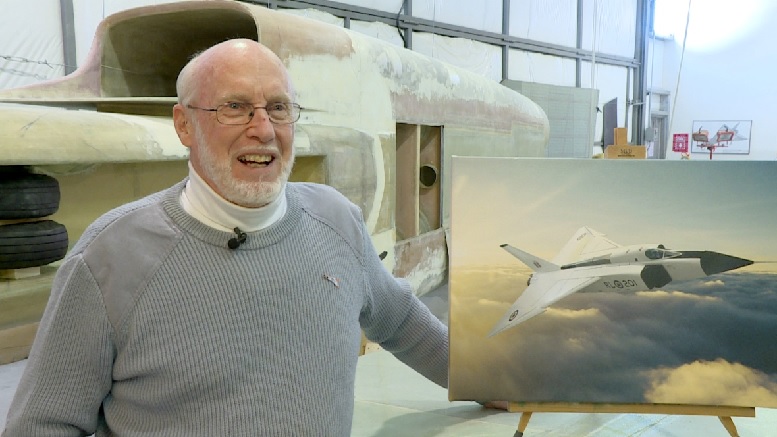
Mike Ward with the underbelly of the Arrow II fuselage behind him. PHOTO Dave Gilson-CBC
Avro as it was known missed out on being the creator of the first passenger jet by a few days, and only because of runway construction.
Beaten by Britain’s “Comet”, Avro’s Jetliner showed magnificent performance, and didn’t have the Comet’s fatal design flaw.
Alas, Canadian government interference would put an end to what would have been a world commercial success, ordering the company to concentrate instead on contracts for another of its designs, the all-weather CF-100 fighter jets.
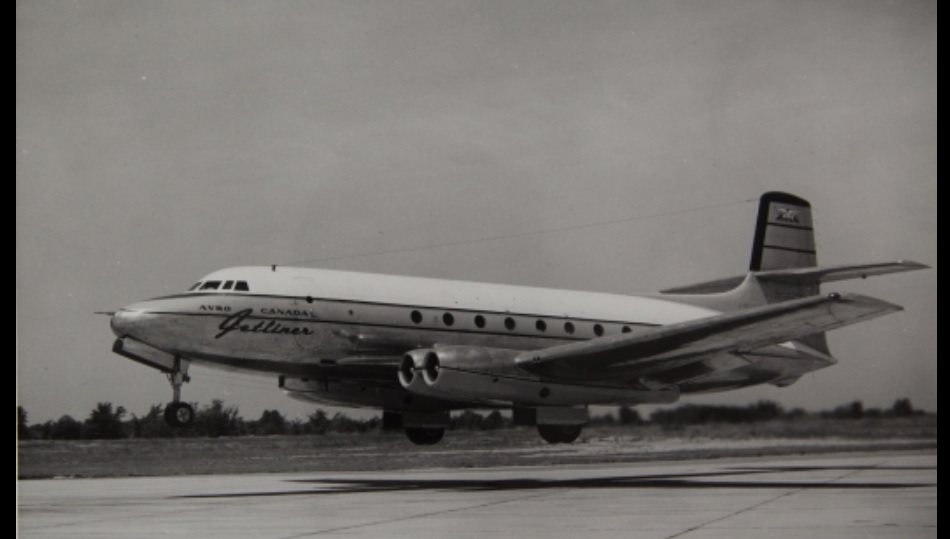
The Avro C-102 Jetliner (shown Dec. 31, 1949) was years ahead of any competitor,and could have been a huge commercial success but was sidelined under orders by the Canadian government. PHOTO: sikicommons
As the chill of the Cold War increased, the threat from Soviet bombers increased and Canada began a search for a high speed, high altitude interceptor, but no country had a suitable example, so A.V Roe Canada was challenged to create one.
The result in 1958 was the magnificent CF-105 Arrow.
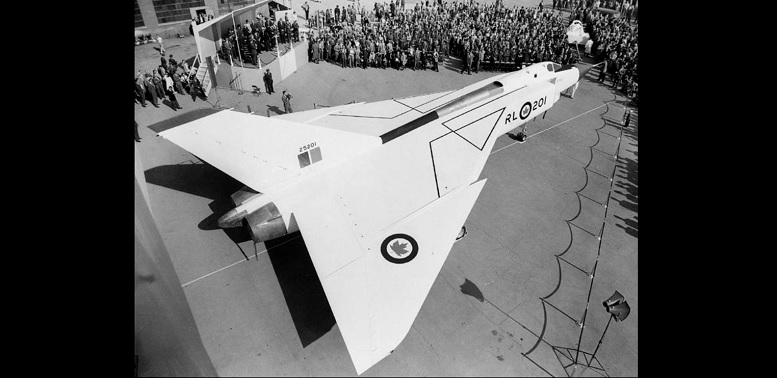
The amazingly sleek Avro Arrow on its official rollout Oct 4 1957. The destruction of the Arrow remains as an open wound for many Canadians. PHOTO- wikicommons
Initial test flights showed the clear potential for the plane with outstanding performance; able to fly faster and higher than any competitor, and with a new much more powerful Canadian “Orenda-Iroquois” designed engines almost ready, it was destined to do even better.
The aviation world and military powers knew the Arrow was a world beater, with many previously unheard of technological innovations, but the development programme was suddenly cancelled by the government of the day as being too expensive and with the advent of ground to air missiles, the government felt the plane was no longer needed.
So the programme was not only cancelled, but brutally so, with the existing planes being ordered destroyed and even the purpose built equipment and jigs were ordered destroyed.. It was almost seen as a vengeful move, and conspiracy theories involving international powers have abounded ever since as to why the abrupt and brutal end.
RCINET: Death of a national dream
The company soon folded, putting thousands out of work. Hundreds of the highly skilled staff were quickly snapped up by the US aerospace industry and NASA.
The plane and it’s cruel demise have remained as a huge scar in Canadian aerospace history and indeed on the Canadian psyche.
Back to the skies !
While a full-scale model was created in 2006,and is housed in the national aviation museum, it cannot fly.
However, a dedicated group of highly skilled volunteers in Calgary is well on the way to making history.
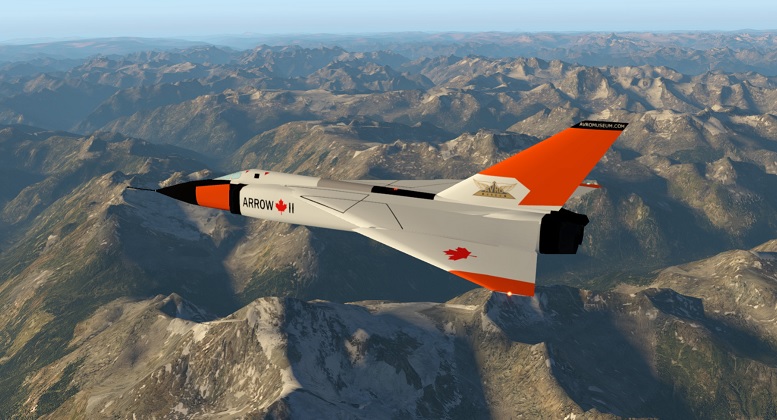
Computer impression of the Arrow II in the skies over the Racky Mountains of Alberta. PHOTO-supplied
For the past many years they have quietly been building their own two-place 60%-scale high-performance replica.
Called the Arrow II it is being built using modern high-tech composite materials. The Arrow II will use two Pratt and Whitney engines of the kind used in small business jets.
The project is of course expensive, and so far all the hundreds of thousands of dollars in costs have been privately funded. They’re still looking for the engines which can cost around $1million each.
However, the project is expected to be able to take to the skies within five years. All those who appreciate flying, and Canadian aviation and Canadian hi-tech history, are eagerly awaiting.
In the meantime, the Avro Museum holds an open house at the hangar for the public on the second Sunday of every month between 12 noon and 3 pm, so that they can observe the group’s progress. They also have a flight simulator that allows visitors to try their hand at flying the Arrow, and the simulator uses the actual engineering and design for the replica under construction.
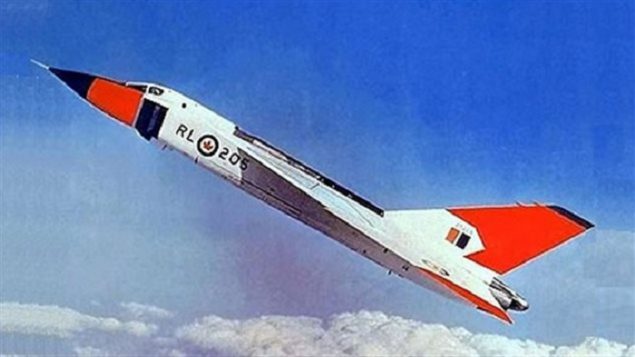






For reasons beyond our control, and for an undetermined period of time, our comment section is now closed. However, our social networks remain open to your contributions.